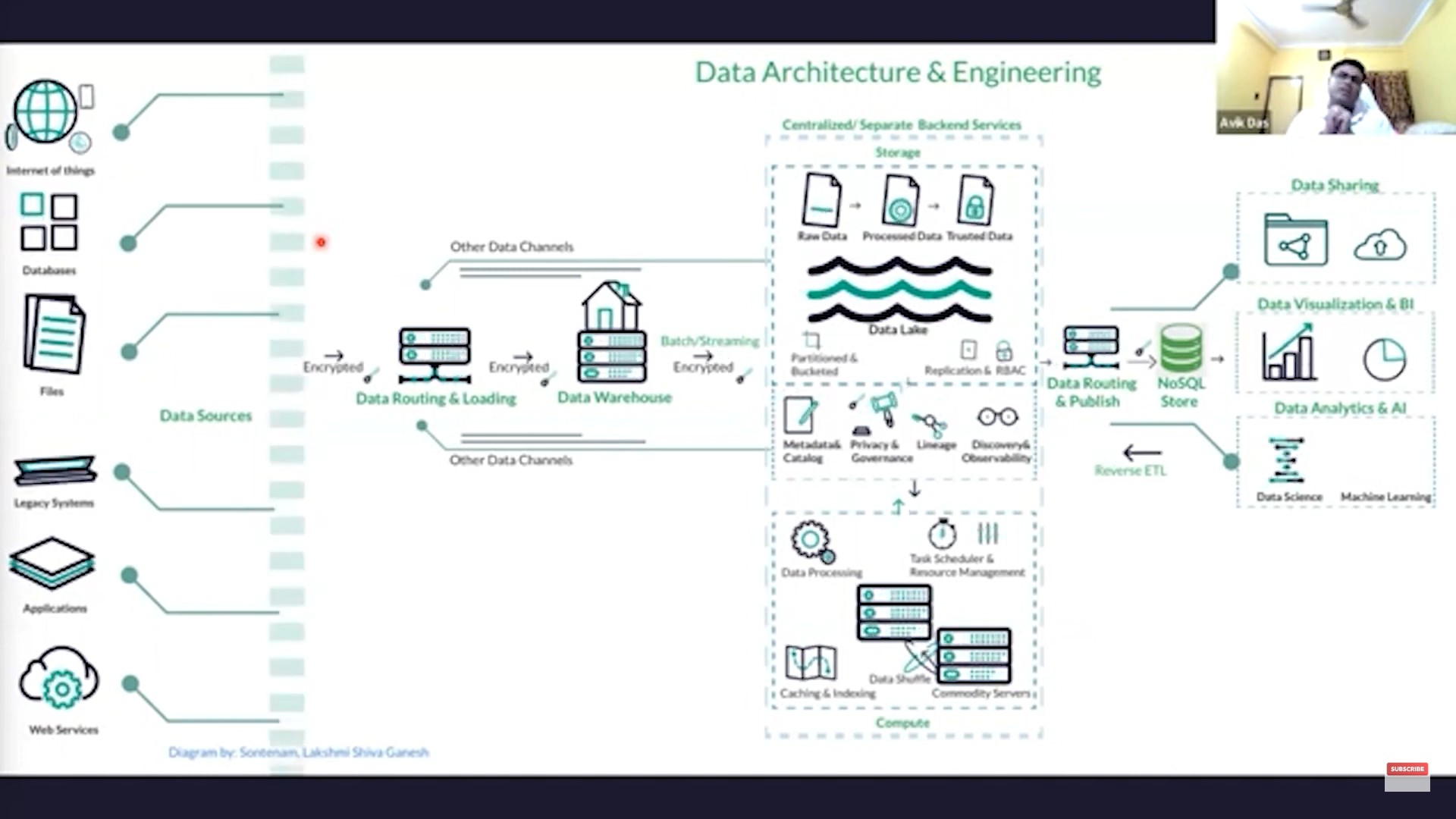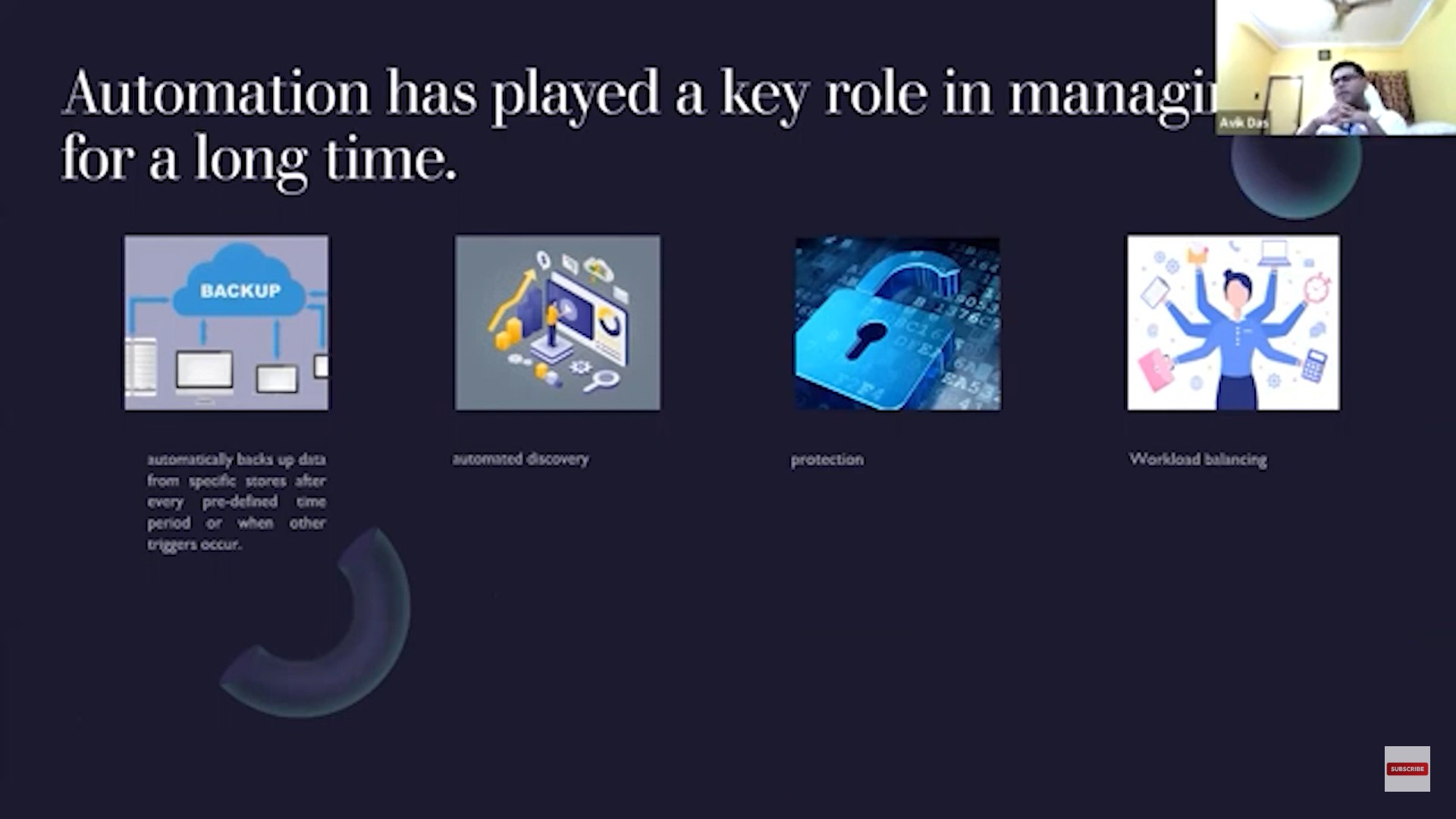Introduction
Effective data management is crucial for organizations of all sizes and in all industries because it helps ensure the accuracy, security, and accessibility of data, which is essential for making good decisions and operating efficiently. Properly organizing and maintaining your data can help ensure that it is accurate and up to date. This is important because inaccurate data can lead to incorrect conclusions and poor decision-making. Well-managed data is easier to access and use, which can help you save time and reduce the risk of errors. In some cases, proper data management is required by law, such as the General Data Protection Regulation (GDPR) in the European Union.
Learning Objective
Database management system vendors are now deploying artificial intelligence, particularly machine learning, into the database itself. Diagnosis, monitoring, alerting, and protection of the database can now be done automatically by the software.
In this session, we will cover the following objectives:
- Why Management of data is very important, and how does it?
- Importance of well-managed data for the better decision making
- Role of AI in data management systems
- How Automation saves plenty of time and plays a crucial role in data management systems?
In this DataHour, Avik has explained how AI is used efficiently for data management.
About Speaker: Avik Das, Scientist at Tata Consultancy Services(TCS), has 6+ years of experience in the Analytical field. He has conceptualized and delivered analytical solutions encompassing data collection, integration, cleaning & pre-processing.
Avik had completed MBA (Marketing & Finance) and B. TECH (IT) with 1st Division and ranked within the top 5 in MBA. He is interested in statistical analysis, data modeling, and visualization.
Connect with Avik on LinkedIn.
Table of Contents
- Introduction
- The Disadvantage of Poorly Managed Data
- Importance of Standardized Data
- 3 Ways AI is Changing Data Management
- Autonomous vs. Autonomy
- Conclusion
The Disadvantage of Poorly Managed Data
We will start with a story for better understanding. There are 2 colleagues, Bob and Alice, work in different branches of the same company. Both of them are 500 miles apart from each other. Bob is an experimentalist in a systems biology project, and Alice is the Modeler in the same project.
Daily, Bob sends data to Alice. He normally puts it in a spreadsheet sent via email. Sometimes Alice gets a bit annoyed because the data looks different each time. Not the results but rather how the data is distributed on the sheet. Alice complains that she spends too much time writing software to make sense of the spreadsheets before actually starting to model the biological data contained in them.
Sometimes Alice has to ask Bob what he really means when he sends the data, like ‘what does the H in cell E1’ mean? And “* in cell F1”. Sometimes Alice has to ask Bob about old long forgotten experiments. He has to look up that information in the lab notebook. Sometimes Alice misunderstands the data representation and has to redo everything when the mistake is realized.
The lack of standardization and organization of data is not easy for Bob either. Bob often gets new students that he needs to compile and hand in the data, but it can take weeks to find everything and make it viewable for the new researcher. Bob had requests from other researchers about data from his papers; this data is archived and long forgotten.
He struggles to piece the original data together and has missed out on potential collaborations as a result. Bob and Alice’s bosses also don’t find this to be the perfect approach to work.
So, from the above story, we realized that data should be presented very simply so that it is easy to understand. Otherwise, it will impact the business.
Importance of Standardized Data
The data formats can be predefined so that the identity of every cell of every column and row has an underlying identity known as a standardized format. The data sheets can be annotated with metadata so that all the information required to reproduce the experiment is packaged with the data itself. Standardized data improves Alice and Bob’s research collaboration by preventing misunderstandings. This data using these annotations can be stored in linked systems or common resources that allow colleagues, collaborators, and the public to find, access, combine and reuse this data whenever needed.
We can say that AI engines and any other person are dependable on each other. Both have to be very organized and should have proper strings between them. So whatever one thinks, the other person should understand it. Here the AI engine needs to understand what Bob needs to do with his data.
Businesses need data management systems that run efficiently and at high performance. They should be capable of producing accurate results. This data needs to be accessible to data scientists for building the AI-enabled application. Hence, AI should be embedded in data management systems. If someone has the idea of how to use the data systematically, he/she can do it in 2 ways.
We always receive data from various sources with multiple formats. This data helps you predict the conclusions required for better decision-making. For this, you need to store and map the data to each other. It will connect such dots that can be described in the future.
Always give the complete information/data to the engine. Otherwise, it would not give you the proper recommendations or predictions. The engine needs to learn from your data to give proper information. You can see there is raw data, processed data, and trusted data. Trusted data means you can use the data similarly, and this is validated data. Whatever the engine learns is validated by someone or some other engine.
Suppose you are going to use above mentioned data. We will use the entire data (present on LHS) for Data Visualization and Analytics. This data is very messy, unstructured, and raw. Hence, the data visualization tool will not give you the correct visualization.
3 Ways AI is changing Data Management
1. Data Management to Data Fabric
Establishing enterprise AI capabilities requires expensive high-performance data architecture. In many organizations, creating a data ecosystem is nothing more than a five-dream event, i.e., the reality of budget limitation, legacy system, complexity, etc. This is where the concept of data fabric comes into use.
What is Data Fabric?
A distributed data management platform that can connect all the data points with all data management tools and services is known as Data Fabric. It serves as a unifying layer that enables data to be seamlessly accessed and processed.
2. AI-powered Data-Cleansing
Now, we will study AI-powered Data-Cleansing. Cleansing the data is very important because poor-quality data costs the companies badly. Bad data leads to bad decisions and hence causes loss.
As per the report, the average financial impact of poor data quality on organizations is 9.7 Million/year. In the US market, IBM found that businesses lose 3.1 trillion dollars annually due to poor data quality.
Data scientists are leveraging AI and its subset machine learning to automate and accelerate the data cleansing process.
3. Intelligent Enterprise Data Catalogs
Companies use data and digital management tools for inventory and organizing the data within their systems. For example, AWS azure provides many automated AI systems that will help a non-technical person use the data he needs.
AI and ML algorithms can also populate and update the data sets without human intervention. It reduces labor costs and manual work.
Autonomous vs. Autonomy
As per Toby McClean, Forbes Council Member, Autonomy is self-sufficient and requires no human intervention. It can learn and adjust to dynamic environments and evolves as its environment changes. On the other hand, Autonomous is narrowly focused on specific tasks based on well-defined criteria and restricted to the certain tasks it can perform. Automation has played a key role in managing data for a long time.
The four steps it uses to manage the data is Backup, automated discovery, protection, and workload balancing. It can analyze and predict the situation whenever there are chances of cyber attack and will heal itself.
Conclusion
Enterprises need to ensure whether their database systems are running efficiently or not. AI can help automate the management of queries based on their likely resource consumption. It reduces manual governance and work. AI improves query performance and accuracy. So, basically, it accelerates the productivity of Data scientists by handling most of the work itself. Hence, Automating the data management system is a crucial step.
Below are our takeaways from the above session.
- Well-managed data is crucial for better decision-making and avoiding business losses.
- Data stored in linked systems or common resources allows colleagues, collaborators, and the public to find, access, combine and reuse it whenever needed.
- AI helps in Data Fabric and Data Cleansing, which saves the productive time of Data Scientists.
- Automating data management systems saves time and manual labor, resulting in better business performance.







